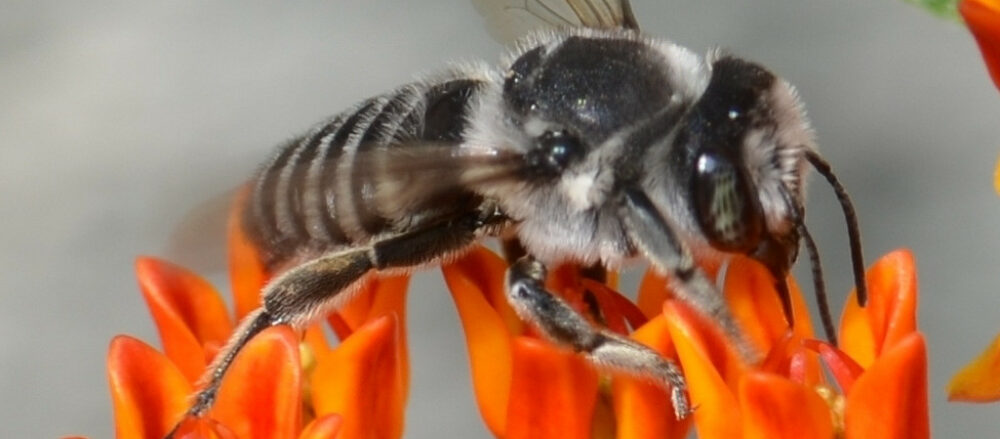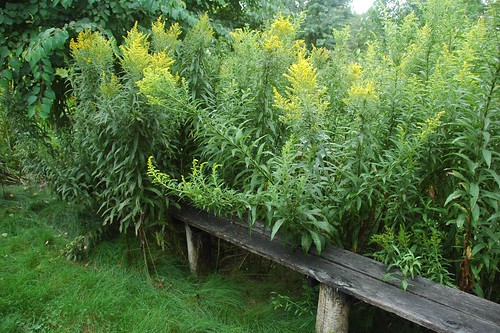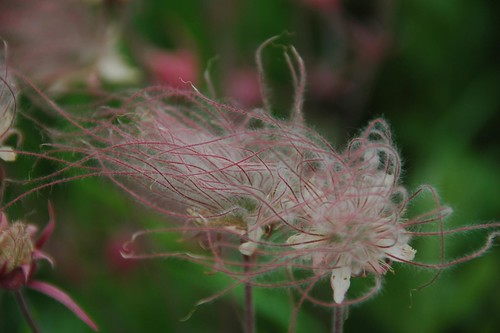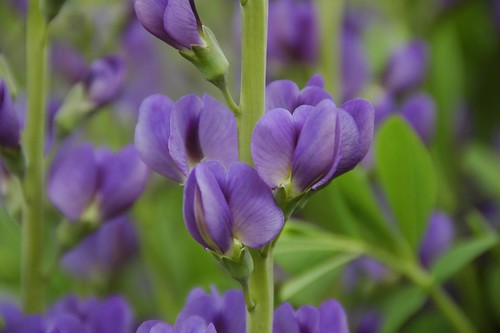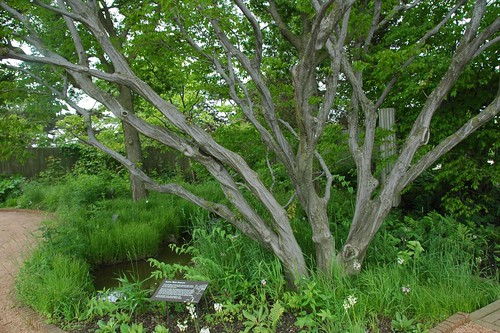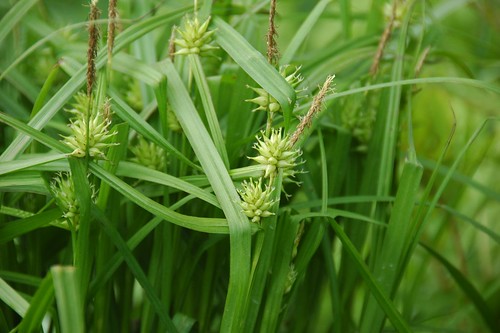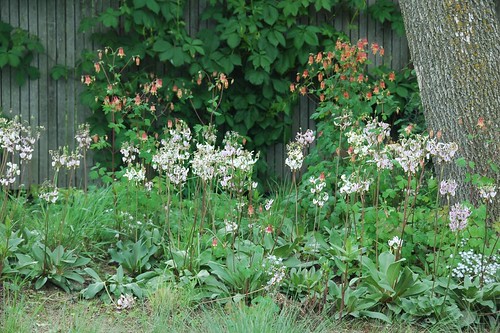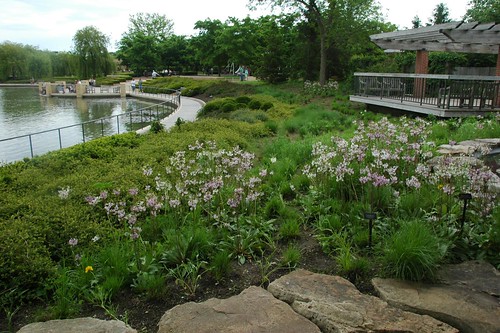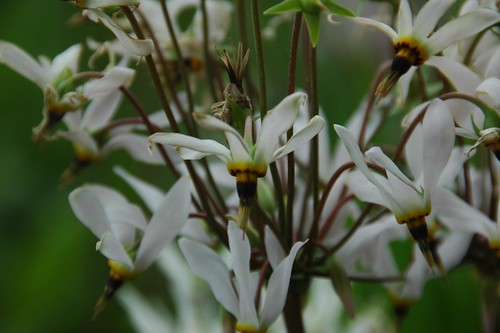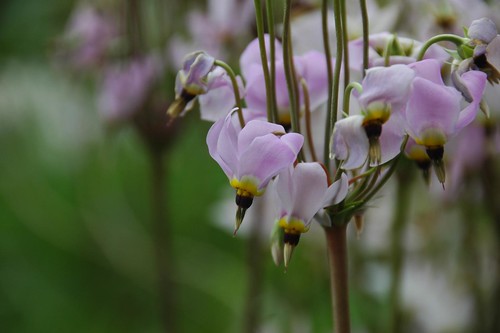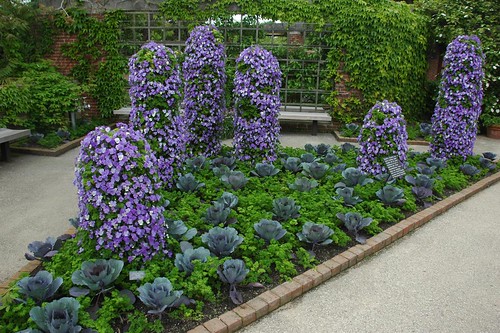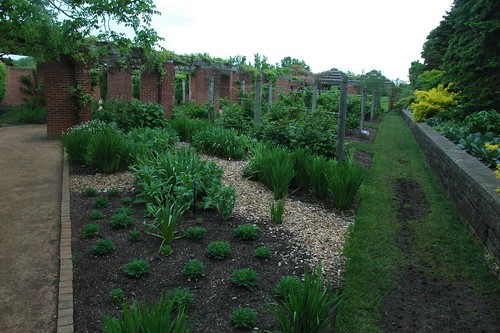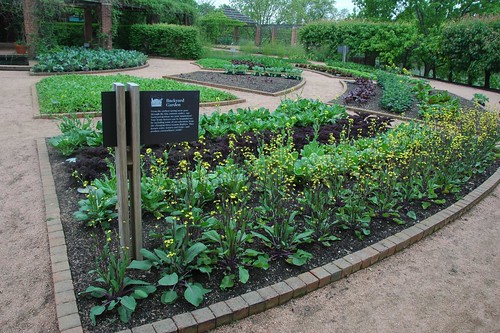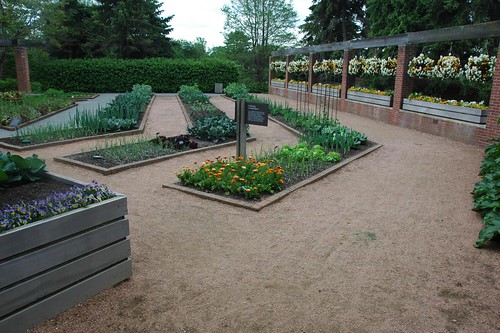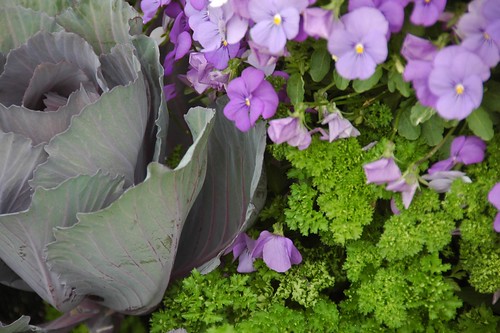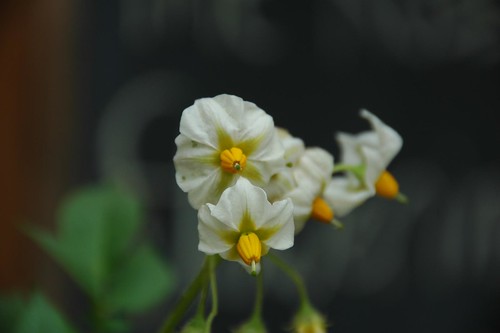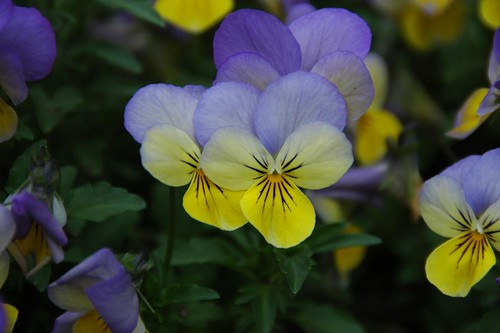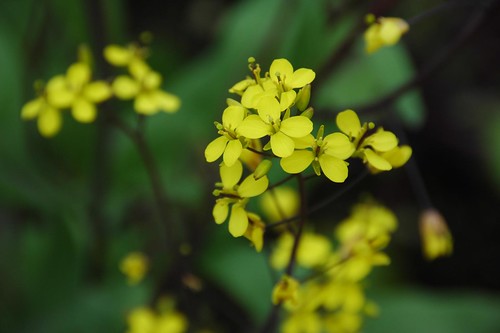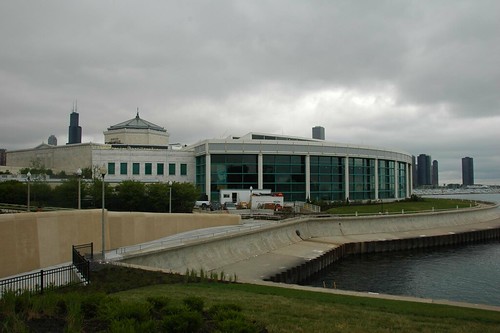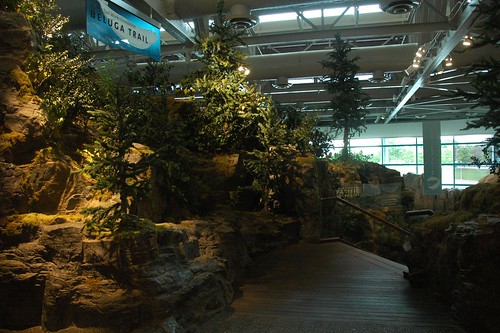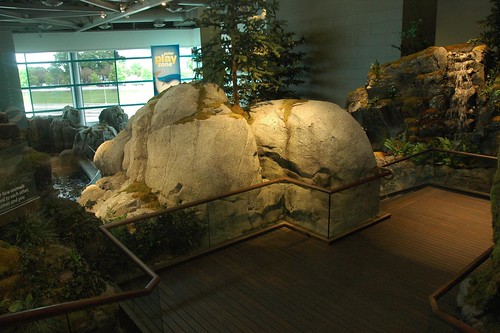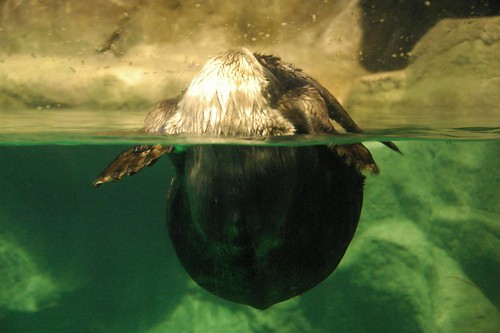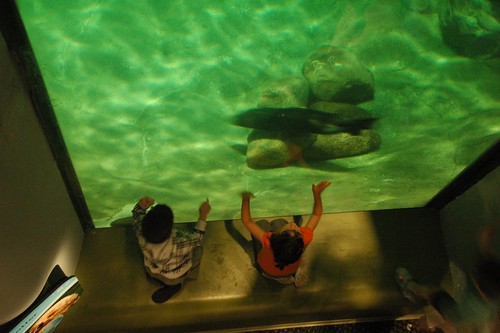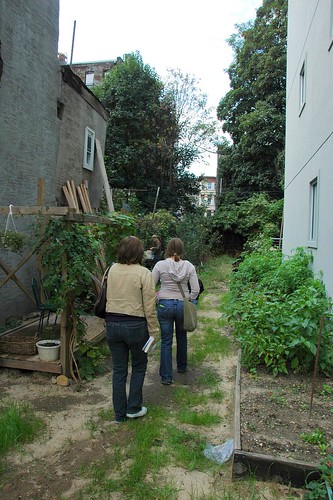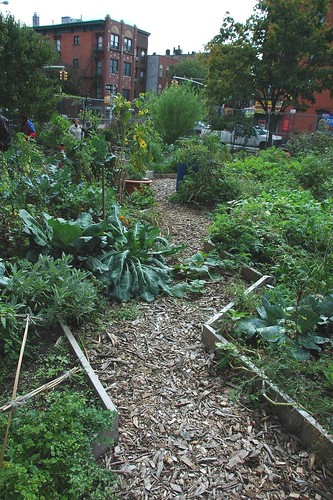A path in the Brine Garden in Pawling in Dutchess County, NY, north of New York City.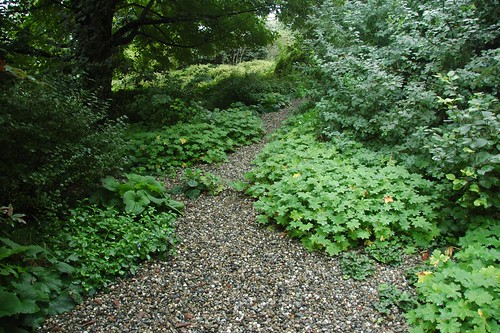
Last Sunday, Blog Widow and I drove up to Pawling, NY and spent the day with a friend of ours. I also got to meet Julia and Duncan Brine. In their landscape design firm, they specialize in native plants, so I was excited to meet them and visit their gardens.
The gardens ramble over six acres. In contrast to the familiar limitations of urban gardening, it may as well have been 600 acres. The property slopes, steeply at times, from the unpaved entrance drive down to Route 22. Water flows through the property. The day of my visit, precipitation seamlessly cycled through mist, drizzle, sprinkles. There was nearly a film of water over the gardens. I’m not exaggerating. My friend’s sneakers became soaked just from walking through the long, wet grass. And it was wet enough for this fellow to crawl over the ground to his burrow of mud at the base of a log.
With the almost constant rains we’ve had this summer, everything was lush, full, and green. The rampant growth encroached from all sides, overtaking and disguising any intended boundaries of the cleared areas. This contributed to the fluid expression of “path” at play in the Brine Garden. Narrows suggest passage; wider bays encourage a slower pace.
Related Content
Brine Garden, Pawling, NY, Flickr photo set
